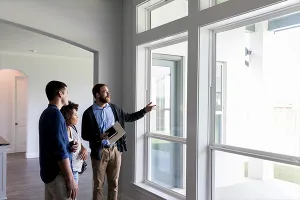Karen Chapple, a professor of city and regional planning at the University of California, Berkeley, is an affordable housing expert who wanted to test her ideas by building a small home in the yard behind her house.
Known as accessory dwelling units, or ADUs, small backyard homes are growing in popularity across the country, especially in Western cities. Advocates tout ADUs as an excellent way to provide affordable housing in increasingly unaffordable urban neighborhoods. Skeptics say the trend is encouraging, but the number of ADUs being built is pitifully short of what is needed to make a dent in the affordable housing crisis. Fearing the impact on their neighborhoods, opponents have imposed restrictions and outright bans on ADUs in a number of cities.
Several years ago Chapple was approached by a group of civil engineering students seeking her advice on building an energy efficiency class project. “Why don’t you use my yard for your project to build an energy efficient tiny home?” she asked the students. They agreed.
The students designed Chapple’s ADU, pulled the permits and built a model 400-square-foot tiny home in her Berkeley Flats yard.
Kol Peterson, a Portland, Ore., ADU consultant (www. buildinganadu.com), has become a guru to the ADU movement, writing a how-to book called “Backyard Revolution: The Definitive Guide to ADU Development.” He said some cities have made substantial progress in facilitating ADU development but too many others have made it impossible to build ADUs in their cities.
“In some jurisdictions this is a new housing phenomenon so they’re scared of it because they perceive it’s going to alter the fabric of their neighborhoods,” Peterson said. “They worry about parking, and they worry about their single-family neighborhood becoming a slum.”
“In Portland, they have the most ADUs of any jurisdiction in the country, but it’s only one percent of the housing supply,” he said. “It’s better than anyplace else, but it’s still got a lot of room for improvement.”
“There’s not a single city east of Austin, Texas, that has decent ADU regulations; not even close to decent,” Peterson said. “The current regulations are bad on the entire East Coast.”
Chapple said ADUs increase the supply of affordable housing. A seemingly contradictory divide has grown up, however, between ADU proponents and affordable housing advocates.
“Affordable housing advocates are angry about ADUs because they think they’re getting some sort of free ride, and they’re not providing affordable housing,” Chapple said. “It’s affordable housing for your own family.”
Affordable housing is a major justification for ADUs, but there are other good reasons to take up residence in a tiny house in somebody’s backyard. ADUs are the latest twist on separate facilities such as “carriage houses” and “granny flats,” where homeowners provided housing for family, servants or renters.
ADUs make great places for students, including family members, who are attending college. Many provide housing for elderly parents who need to cut their housing costs and maintain their independence while living close to adult children in times of need.
Urban planners like ADUs because they contribute to the goal of increasing density in single-family residential neighborhoods and promote infill development.
There is a strong NIMBY (Not in My Backyard) element to neighborhood opposition to ADUs. Opponents object to denser neighborhoods, small houses on the edge of their property and the possibility of tax increases to pay for services to new residents. There is a perception, incorrect according to Chapple, that new ADU residents create neighborhood parking problems.
She said her studies have shown no net loss of parking space in Portland and Seattle neighborhoods that have a lot of ADUs. “Wait a minute,” Chapple tells opponents who raise parking issues, “people have fewer cars. There also are households with six cars. It’s just that they’re not living in tiny homes.”
Among cities where anti-ADU arguments have delayed action on ordinances easing ADU restrictions is Boulder, Colo. Ken Hotard, vice president of the Boulder Area Association of REALTORS®, said the city has an acute shortage of affordable housing units.
Hotard said city planners have come up with a package of reasonable regulations, but progress has been thwarted by the protests of angry residents and the fears of cautious politicians who put off a decision until after the 2018 election. Boulder has held six public hearings, including one that lasted six hours and attracted 60 speakers, many of whom opposed the new regulations.
The issue of renting ADUs has drawn a mixed response, even from cities that are encouraging development of the small houses. Some opponents don’t want strangers moving into rental units in their established neighborhoods, but advocates say lower-cost rentals increase affordable housing options and help young couples and families use ADU income to reduce their housing costs.
Asmund Tweto, a Portland architect (www.asmundtwetoarchitect. com), said a number of Portland ADU owners use the buildings for different purposes at different stages of their lives. “Lots of young people who have a big house have built an ADU,” he said. “They live in the ADU and rent the big house. When they have kids they switch and they rent out the ADU and live in the big house. As they get old, they can switch again when they no longer need to live in the big house.”
Tweto built a 340-square-foot ADU in his backyard in 2017. He has been renting it, mostly through Airbnb.
“I’m using ours as a short-term rental, and we’ve had hundreds of people stay there,” Tweto said. “It’s 70 to 80 percent booked most of the time.”
Cities promoting ADU development offer a number of incentives such as waiving development fees, easing parking requirements and reducing bureaucratic rules. Peterson said it’s been a pleasure dealing with Portland’s ADU bureaucrats because the fee waivers can save ADU owners about $20,000.
Calling ADUs small or tiny houses can be misleading. They are real houses, built to the same standards as singlefamily houses in the community — only smaller. Both ADUs and main houses are required to have living space, at least one bedroom, and kitchens and bathrooms with standard cooking and plumbing facilities. Each type of house must be connected individually to electric, gas, water and sewer lines.
Size restrictions are common in cities that encourage ADU development. Tweto said Portland limits ADUs to 800 square feet or 75 percent of the area of the main house.
There are two types of ADUs, internal and external. External refers to stand alone units that are not connected to the main house. Internal refers to basement and garage ADUs that are part of the main house.
Converting internal space into an ADU is generally cheaper, but may be more complicated than building a new unit and can be subject to stricter regulations. Building codes usually require separate entrances for internal ADUs.
Calling the main houses, which share a lot with ADUs, “big houses” is also a misnomer. Main houses in Portland and other cities tend to be smaller two- or three-bedroom houses built as far back as the 1920s to house working class residents — not McMansions housing the rich. These older neighborhoods tend to be gentrifying, affecting both affordability and availability.
ADU affordable-housing solutions are getting more creative. In an attempt to develop more affordable housing in high cost San Francisco, Chapple said, local officials have allowed the conversion of apartment parking garages into ADUs.
The cost of building an ADU varies widely depending on local conditions and political priorities. Chapple said costs run about $350,000 to $390,000 in the San Francisco Bay area with reports of ADUs that cost $800,000 to build.
“I’ve been sort of shocked by how expensive these are turning out to be,” she said. “$350,000 is not quite an affordable unit.”
Portland REALTOR® Matt Guy said he could build an “entry-level” ADU there for about $150,000.
In a 2017 survey, Chapple’s U-Cal research team concluded that it cost an average of $156,000 to build an ADU in three progressive Northwestern cities — Portland, Seattle and Vancouver, B.C.
Chapple said her team at U-Cal is developing an ADU report card to measure how well California cities are doing to encourage development of ADUs as an affordable housing solution.
“The median grade right now is somewhere around a B or B minus,” she said. “There are a few who have used this as an opportunity to make it harder to build ADUs.” Chapple said. Some suburban officials are resisting ADUs, she said, but there is surprisingly strong support in some rural areas.
John Rosshirt, a REALTOR® who lives in a rural area outside Austin, is converting his garage into an ADU to house his wife’s aging parents.
AARP is making support for ADUs a pillar of its plan to dramatically increase the supply of affordable housing for seniors. AARP and the American Planning Association are joining forces to update an ADU report they first released in 2000.
“By 2035, we’re going to have more people over the age of 65 than under the age of 18,” said Rodney Harrell, AARP’s director of livability though leadership.
“The trend more and more is for cities to open up to ADUs,” he said. “They’re starting to understand that many cities are having affordability crises. There are people living there who want to stay there, and they’re having a hard time.”
John Van Gieson is a freelance writer based in Tallahassee, Fla. He owns and runs Van Gieson Media Relations, Inc.







